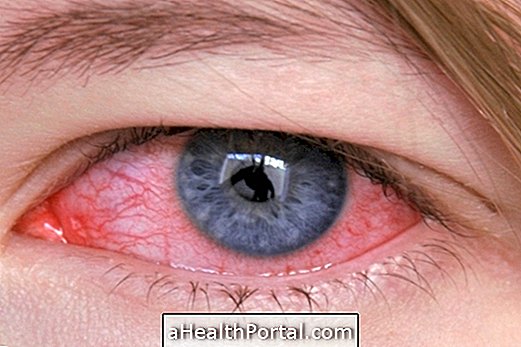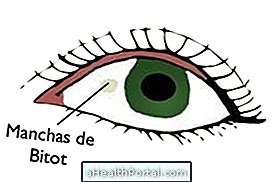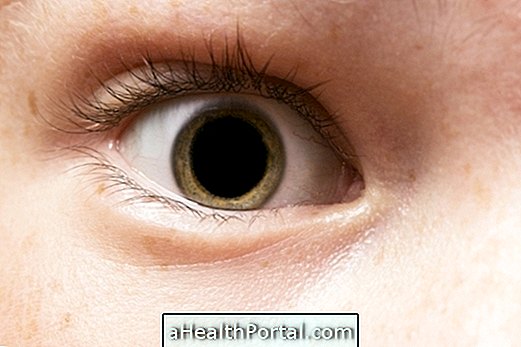Ocular tuberculosis occurs when the bacterium Mycobacterium tuberculosis, which causes tuberculosis in the lung, infects the eye, causing symptoms such as blurred vision and hypersensitivity to light. However, this bacteria can affect various parts of the eye and therefore the symptoms can vary greatly depending on the affected site.
This type of infection is more common in patients with HIV, in patients already infected with tuberculosis elsewhere in the body or in people living in places without basic sanitation for treatment of sewage and waste water.
The ocular tuberculosis has a cure, however, the treatment is delayed, and can last between 6 months to 2 years, with the use of antibiotics recommended by the ophthalmologist.

Main symptoms
The two main symptoms of ocular tuberculosis are blurred vision and light hypersensitivity. However, it is also frequent to see other signs such as:
- Red eyes;
- Burning sensation in the eyes;
- Decreased vision;
- Pupils of different sizes;
- Pain in the eyes;
- Headache.
These symptoms are not present in all cases and can vary greatly according to the affected site that is usually the sclera or uvea of the eye.
Often these symptoms can arise when the person is already diagnosed with pulmonary tuberculosis and therefore it is important to inform the doctor as it may be necessary to change the antibiotic used.
See other common causes of redness in the eyes, which are not tuberculosis.
How to confirm the diagnosis
The diagnosis of ocular tuberculosis is almost always done by observing the symptoms and assessing the clinical history of each person. However, the doctor may order a laboratory test of the eye fluid to confirm the presence of Mycobacterium tuberculosis .

How is the treatment done?
The treatment is done in the same way as the treatment of pulmonary tuberculosis and is therefore initiated with the use of 4 remedies, including Rifampicin, Isoniazid, Pyrazinamide and Etambutol, for about 2 months.
After that time, the ophthalmologist advises the use of 2 of these medicines, usually for another 4 to 10 months, to ensure that the bacteria is completely eliminated from the body. In some cases, drops of corticoid medication may still be prescribed to relieve the symptoms of itching and burning during treatment.
Since treatment is time-consuming, it is very important to follow all doctor's guidelines so that bacteria are eliminated and not continue to develop, becoming stronger and harder to eliminate.
Here are some tips to speed up the treatment of tuberculosis.
What can cause ocular tuberculosis
The bacteria responsible for the onset of ocular tuberculosis can be transmitted from one infected person to another through small drops of saliva, which are released by coughing, sneezing or speaking, for example.
Thus, whenever the diagnosis of tuberculosis is made to someone, whether it is ocular, pulmonary or cutaneous tuberculosis, it is very important that all the most intimate people, such as family or friends, take the test to know if they have the bacterium, since can go several days or weeks until the first symptoms appear.
How to prevent tuberculosis
The best ways to avoid tuberculosis are to vaccinate against the disease and avoid close contact with infected people by avoiding changing utensils, toothbrushes or other objects that may come in contact with other people's saliva.
Understand better how tuberculosis contagion works and how to protect yourself.



-e-como-tratar.jpg)


















